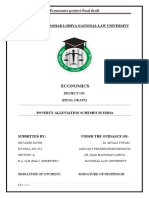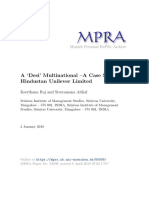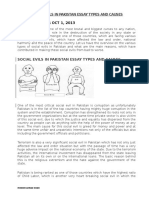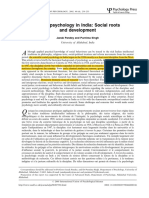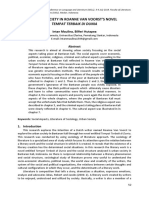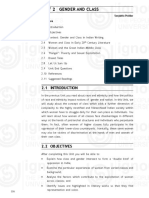**Overview of Human Resources**
- **Human Resources**: The productive abilities of a country’s population.
- **Human Capital Formation**: Investing in education and health enhances human resources,
yielding returns similar to physical capital investments.
- **Economic Sectors**: Economic activities are categorized into primary (agriculture, mining),
s econdary (manufacturing), and tertiary (services like healthcare and education).
**Gender Roles in Employment**
- Economic participation is often gender-biased, with men compensated for their labor while
women often work in unpaid roles, lacking job security and basic benefits. Education enhances
job prospects and income for women.
**Quality of Population**
- The quality of the population is assessed through literacy rates, health indicators, and skills,
crucial for a nation’s growth.
**Education's Role**
- Education boosts societal growth and economic productivity. Initiatives like the **Sarva Siksha
Abhiyan** aim to provide universal elementary education. The focus has been on improving
access and quality of education.
**Health Improvements**
- Improving population health is a priority, with government policies targeting accessible
healthcare for underprivileged sections.
**Unemployment**
- Unemployment manifests differently in rural (seasonal and disguised) and urban areas
(educated unemployment). The agricultural sector remains the largest employer, but there's a
decline in dependency on it, with shifts to secondary and tertiary sectors.
�### Key Concepts
- **Definition of Poverty**: Poverty encompasses hunger, inadequate shelter, and lack of basic
s ervices. In India, 1 in 4 individuals lives in poverty.
- **Poverty Line**: A measure determined by minimum requirements for food, clothing, and
essential services. As of 2011–12, the poverty line was set at Rs 816/month in rural areas and
Rs 1000/month in urban areas.
- **Trends**: From 1993 to 2012, poverty in India decreased from 45% to 22%.
- **Vulnerable Groups**: Scheduled Castes, Scheduled Tribes, and rural agricultural laborers are
the most affected by poverty.
- **Inter-State Disparities**: States like Bihar and Odisha report high poverty rates, while others
like Punjab, Haryana, and Kerala show significant declines through economic growth and
effective policies.
- **Global Context**: Countries like China and those in Southeast Asia have seen substantial
poverty reductions through economic growth and investment in human resources.
### Causes of Poverty
. **Historical Factors**: British colonial policies stunted economic growth and industrial
1
development, leading to persistent poverty.
. **Income Inequality**: Disparities in land and resource distribution contribute significantly to
2
poverty.
. **Agricultural Constraints**: Small farmers often face debt when unable to afford agricultural
3
inputs.
### Anti-Poverty Measures
1. **Economic Growth Promotion**: Economic advancements are linked to poverty reduction.
2. **Targeted Programs**: Various initiatives include:
- **Mahatma Gandhi National Rural Employment Guarantee Act**: Guarantees 100 days of
wage employment in rural areas.
� - **Prime Minister Rozgar Yojana**: Aims to create self-employment opportunities for
educated youth.
- **Self-help Group Programs**: Support poor families in achieving self-sufficiency.
### Future Challenges
espite improvements, poverty remains a significant challenge. Addressing it will require
D
s ustained economic growth, universal education, and empowerment of women and marginalized
communities.
### Key Points
- **Food Security Dimensions**:
- **Availability**: Food production, imports, and reserves.
- **Accessibility**: Food must be reachable to all.
- **Affordability**: Individuals must have sufficient resources to purchase nutritious food.
- **Importance**: Food security is vital during natural disasters that lead to food shortages and
potential famine, characterized by starvation and related epidemics.
- **Food-Insecure Populations**: Vulnerable groups include landless laborers, traditional
artisans, casual workers in urban areas, and marginalized communities like SCs, STs, and OBCs.
Women, children, and displaced persons also face significant food insecurity.
- **Historical Context**: India aimed for food self-sufficiency post-independence, leading to the
adoption of the Green Revolution, which enhanced food grain production and ensured stability
even during adverse conditions.
### Components of Food Security
- **Buffer Stock**: Managed by the Food Corporation of India (FCI), buffer stock consists of food
grains procured at a minimum support price (MSP) to stabilize availability in deficit areas.
�- **Public Distribution System (PDS)**: A government initiative for distributing food grains
through ration shops. The system has evolved, introducing Targeted PDS to better serve the
impoverished.
### Challenges with PDS
Despite its critical role in food security, the PDS faces challenges such as:
- High buffer stock levels leading to waste.
- Malpractices among PDS dealers, like diverting grains or selling substandard food.
- Complex pricing that discourages non-poor families from purchasing from ration shops.
### Role of Cooperatives
ooperatives, such as Mother Dairy and Amul, significantly contribute to food security by
C
providing affordable goods, particularly in southern and western India.






























































